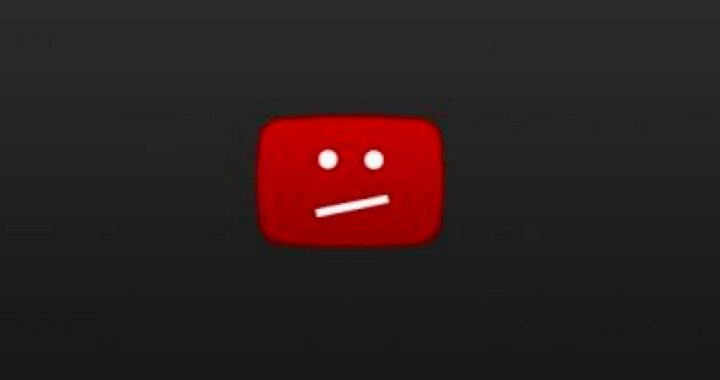
A video critical of sharia law and jihad has been removed by YouTube for allegedly violating the company’s “hate speech” policies. Entitled “Killing for a Cause: Sharia Law & Civilization Jihad,” the video was uploaded last Thursday but has since been flagged and removed because of its criticisms of radical jihad, prompting criticisms from the group behind the video and shining a light on what some are perceiving as censorship by web companies.
YouTube contends the video violated its hate speech policy, which labels any content that “promotes violence or hatred against individuals or groups based on certain attributes,” as “hate speech.”
Last month, Reuters reported that YouTube and Facebook were “deploying systems to block or rapidly take down Islamic State videos and other similar material” following pressure from governments around the world that have been confronted by terror. YouTube and Facebook did not announce this decision, but both are listed among those sites that have deployed the system by two sources familiar with the process, according to Reuters.
Reuters reports that until recently, web companies have relied “mainly on users to flag content that violates their terms of service” and that once flagged, “human editors” will review and delete the posts in violation. But with the new process, companies such as YouTube are “using automation.”
Reuters writes:
The technology was originally developed to identify and remove copyright-protected content on video sites. It looks for “hashes,” a type of unique digital fingerprint that internet companies automatically assign to specific videos, allowing all content with matching fingerprints to be removed rapidly.
Such a system would catch attempts to repost content already identified as unacceptable, but would not automatically block videos that have not been seen before.
According to Reuter’s sources, the new system enables posted videos to be “checked against a database of banned content to identify new postings of, say, a beheading or a lecture inciting violence.”
However, the sources did not provide details on how much “human work” is involved in reviewing the videos identified by the technology, nor did they specify how videos in the database were identified as extremist.
The policy has provoked some controversy, as it borders on censorship, particularly when it seems to be applied subjectively. As observed by Reuters, the web companies have found themselves in the uniquely influential but difficult position of having to counter terrorism without violating free speech, and having to navigate between governmental interests and civil rights.
And whether the CounterJihad video qualifies as a violator of hate speech is another issue. With the video still available for viewing on Counterjihad’s own website, viewers can determine for themselves whether it “promotes violence or hatred.”
The video’s narrator states, “Terrorism seems to be everywhere, and it’s getting worse. The bad guys have lots of names — ISIS, al Qaeda, Boko Haram — but they have one thing in common. They are all killing for a cause: Islamic Law known as Sharia. Sharia is a return to medieval Islam. Sharia demands a Holy War called Jihad. The most widely available book of Islamic Law in English says: ‘Jihad means to war against non-Muslims.’”
The video continues, “But there is another kind of Jihad. In their Explanatory Memorandum, the Muslim Brotherhood calls this ‘civilization jihad,’ saying, ‘The [Muslim Brotherhood] must understand that their work in America is a kind of grand jihad in eliminating and destroying the Western civilization from within and ‘sabotaging’ its miserable house by their hands and the hands of the believers.”
According to the narrator, the civilization jihadists are more insidious in that unlike the violent jihadists, they “wear suits and ties” and demand sharia law in a much more subtle way. Examples the narrator references include filing lawsuits for Muslim drivers that do not wish to transport beer, convincing schools to impose “Muslim days” wherein girls are asked to wear headdresses and the students are expected to engage in Muslim prayer, and ultimately making people afraid to be labeled “Islamophobes” if they speak up when they see something suspicious involving someone of the Muslim faith.
The video also indicates that many of the civilization jihadists operate under innocuous-sounding names, including the Council on American-Islamic Relations (CAIR) and the Muslim Student Association (MSA), both of which have been found by the Justice Department to have been started by the Muslim Brotherhood.
Ultimately, the video asserts that sharia law operates in direct contrast with our free society and has no place under our Constitution.
The video concludes, “There are plenty of modern Muslims who want to ‘live and let live,’ but unfortunately the groups that speak most often for the Muslim community follow the medieval version based on Sharia. They are working to make the U.S. more like the Caliphate. They have to go.”
Supporters of the video note the irony in a policy intended to stop the spread of Islamic extremism that would also target a video with the same intent.
The producers behind the video are surprised by YouTube’s decision to remove it. Jim Hanson, executive vice president of the Center for Security Policy and the official in charge of the video’s production, said, “I am stunned that the policy that YouTube developed for the express purpose of fighting Islamic State propaganda is now being used to silence critics of radical jihad.”
Hansen contends that the decision is evidence that supporters of groups such as the Islamic State (ISIS) have been successful in using YouTube’s policies against critics of ISIS. “Instead of counteracting radical propaganda online,” Hanson said, “these policies are now being used to silence the very speech that YouTube said it wanted — speech that challenges ISIS.”
Similarly, CounterJihad’s Shireen Qudosi stated,
YouTube’s removal of CounterJihad’s factual analysis of the threat of ISIS and radical Islam is a devastating blow against credible counter-terrorism efforts. No company or individual can legitimately say they support free speech and at the same time set up blockades against the very people doing the work necessary to counter the ideology. There is no other way to look at this.
But as observed by Seamus Hughes, deputy director of George Washington University’s Program on Extremism, policies such as YouTube’s that police their content for “extremism” open the door for significant discretion.
“It’s a little bit different than copyright or child pornography, where things are very clearly illegal,” said Hughes.
According to Hughes, web companies may classify extremism and what is called “hate speech” differently, and some companies can apply censorship quite liberally.




